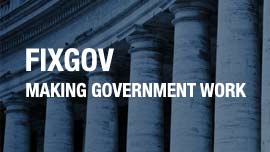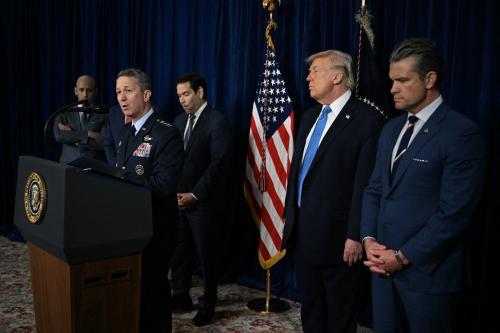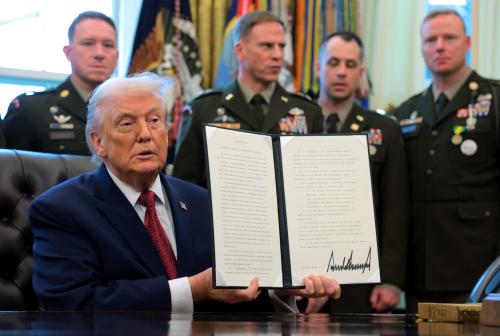Writing about the Clintons as a real-time commentator during the 1990s and then again as an historian when writing my new book, The Age of Clinton: America in the 1990s, was an interesting intellectual experience in charting my own evolution. Learning about the administration from the inside out, and seeing the Clintons in the context of the 1990s, I became more appreciative of Bill Clinton’s noble goals, tremendous potential, and mixed track record. I recently assigned my 2008 book Why Moderates Make the Best Presidents to a class studying the “History of the American Presidency.” One student thought I was particularly rough on Clinton. My disappointment with Clinton reminded her of her generation’s disappointment with Barack Obama.
Herein lies the excitement of interpretive history. As we learn more, uncover more evidence, place information in a broader context, and assess from a longer chronological perspective rather than in the moment, our understandings evolve, becoming richer and more lasting. My “aha moment” with Clinton came from reading the memoranda, writings, and, most particularly, the oral histories of moderate, Third Way, New Democrat advisers like Al From, Bill Galston, and Bruce Reed, supplemented by interviews with aides including Michael Waldman, Don Baer, and Jeff Shesol. Seeing what Waldman called the “connective tissue” in the Clinton story, I concluded that Clinton was as ideological a president as Ronald Reagan, with a surprisingly consistent approach while governing (although not always of course). I tried to resist the false nostalgia for Clinton in the Age of Obama and not be seduced by Bill Clinton’s infectious exuberance—although a cache of photos I found from 1992 illustrated his sheer magnetism. And Clinton’s love of people, politics, policy-making, and the job of being president, in all its frustrations and glories helped, especially given the contrast with an often dispirited Barack Obama.
Assessing the Clinton initiatives that lasted, and issues the press harped on that disappeared—as well as pulling back the camera lens to see the Clinton administration in the context of the 1990s’ sweeping transformations—highlights both Clintons’ insight and far-sight. From and Reed emphasized welfare reform as the defining issue, proof that Bill Clinton was no Great Society, big government Democrat. Moreover, Clinton’s welfare reform worked, defying liberals’ doomsday predictions of a million starving children, showing that the Third Way could be the Way to Go.
The fight against crime may have been even more important. It proved that Bill Clinton refused to be a “Bleeding Heart Liberal” or a “Limousine Liberal.” He could feel the pain of millions, both black and white, traumatized by America’s appalling post-1960s crime wave. Today, with crime dramatically down, although still unacceptably high, it is too easy to dismiss how important it was for the federal government to help deliver one of the most basic services citizens demand: public safety.
Clinton also deserves “snaps”—a ‘90s word—for managing the Great American Hook-Up, the linking of computers to the Internet, making these Everything machines Everywhere machines too. Back in 1990, Amazon was just a river, Google just a number, and “Pay, pal” something mobsters said. In fact, Bill Clinton really did help build that bridge to the twenty-first century.
Nevertheless, the two great failures attributed to George W. Bush—9/11 and the 2008 financial crash—were rooted in the Clinton years. Underestimating Osama Bin Laden was a bipartisan folly, while Clinton and congressional Democrats encouraged the economically destabilizing mortgage mania and Wall Street arrogance. And the moral blind spots of both Hillary and Bill Clinton fueled the partisan fires that continue today. Hillary Clinton’s current campaign remains haunted by the email issue because it resonates with a series of sloppy actions—from Whitewater to shipping White House furniture home to Chappaqua—telegraphing disrespect for the basic rules normal citizens follow. The latest scandal widens the gap between the Clintons’ noble, self-righteous rhetoric and their often tawdry behavior.
That consciousness of the gap between potential and achievement, and the often petty reasons why the hopes about the man from Hope went unfulfilled, explains my disappointment with Clinton when he governed. Broadening my perspective, trying to understand the Clintons in the context of the 1990s, made me more forgiving. The intensity of the change in the 1990s generated an anxiety about change that few leaders could…change. As once solid America became more liquid, more fluid, more relativistic, as what was once the Republic of Something became the Republic of Everything and Nothing, more open yet more anchorless, Clinton as Change-Agent-in-Chief often attracted the anxiety toward him. Even when they weren’t stoking the culture wars, Bill and Hillary Clinton’s boldness in facing change often made them burdened by those very changes.
The Brookings Institution is committed to quality, independence, and impact.
We are supported by a diverse array of funders. In line with our values and policies, each Brookings publication represents the sole views of its author(s).




Commentary
Understanding the culture of the Clinton Era
October 7, 2015